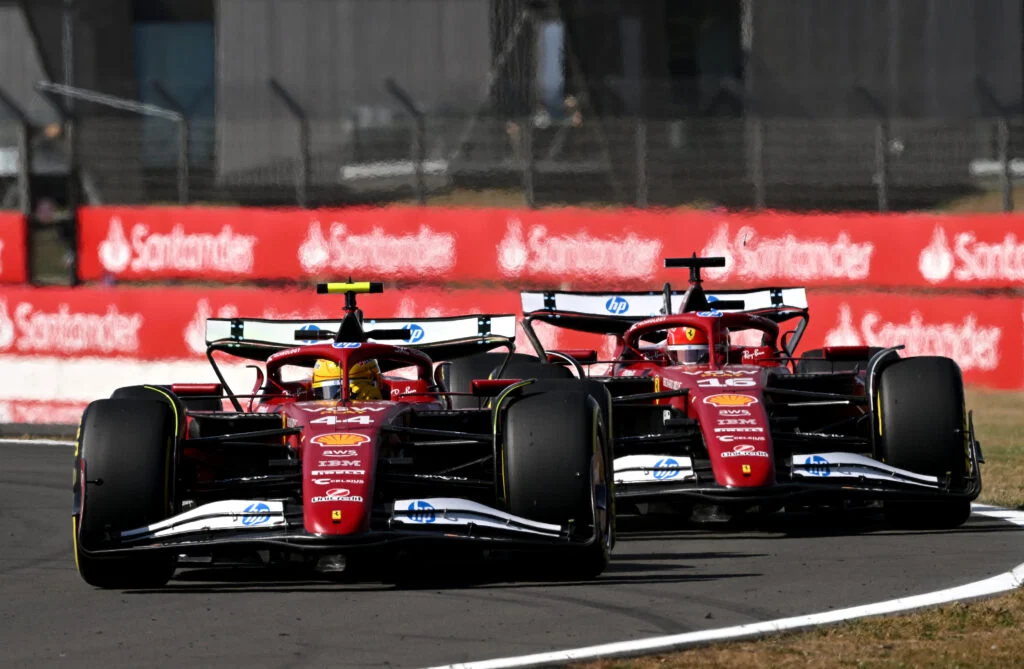
A complete guide to Ferrari's revolutionary upgrades for the 2025 Belgian GP
Ferrari is preparing for one of the most pivotal weekends of their 2025 Formula 1 season with a comprehensive suite of upgrades that could finally unlock the SF-25's true potential at the upcoming Belgian Grand Prix. After months of meticulous development and testing, including a crucial validation session at the Ferrari-owned Mugello Circuit, the Italian team is ready to unleash their most significant technical package of the year at Spa-Francorchamps.
The centerpiece: revolutionary rear suspension upgrade
Advanced anti-squat geometry transformation
The crown jewel of Ferrari's Belgian GP upgrade package is a completely redesigned rear suspension system that addresses the SF-25's most critical weakness: ride height sensitivity. The new suspension features significantly enhanced anti-squat geometry, with the upper wishbone forward leg repositioned approximately 30mm lower than the original specification. This fundamental change enables the car to resist "squatting" under acceleration, maintaining a more stable aerodynamic platform throughout the lap.

Technical Director Loïc Serra personally oversaw the development and testing of this crucial upgrade. The new suspension system incorporates revised mounting points to the gearbox casing, requiring structural modifications to accommodate the altered load paths. According to Ferrari's internal analysis, the upgrade is expected to deliver approximately one-tenth of a second in raw performance, but the real gain could reach two to three tenths if the system delivers on all expectations.
Solving the plank wear crisis
Ferrari's suspension upgrade directly addresses the plank wear issues that plagued the team earlier in the season, most notably leading to Lewis Hamilton disqualification at the Chinese Grand Prix. The SF-25's original suspension lacked sufficient rigidity to prevent excessive bottoming out in high-speed corners, causing the mandatory wooden plank underneath the car to wear beyond the legal 9mm minimum thickness.

The new anti-squat geometry provides enhanced load support at the rear end, allowing Ferrari to run the car closer to the ground without risking plank wear violations. This capability is crucial for maximizing ground-effect downforce, which forms the foundation of modern Formula 1 performance.
Comprehensive aerodynamic package
All-new floor design
Ferrari's aerodynamic upgrades for Belgium build upon the successful floor package introduced at the Austrian Grand Prix. The floor upgrade features extensively revised front floor fences designed to enhance vorticity downstream, along with reshaped tunnel expansion areas and optimized diffuser volume distribution. These changes work in tandem with the new suspension to create a more stable and effective aerodynamic platform.
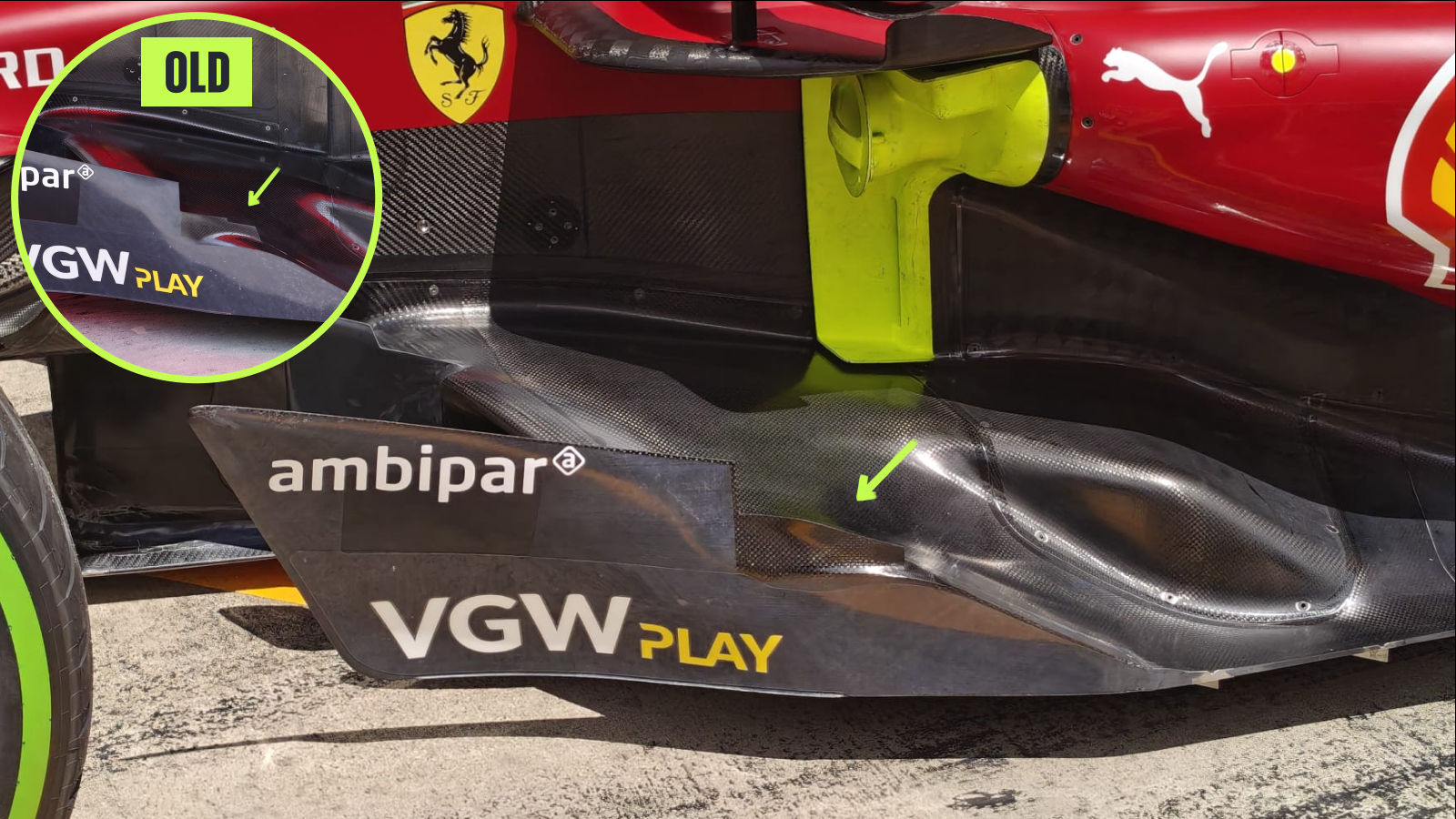
The floor modifications target Ferrari's long-standing issue with aerodynamic sensitivity to ride height changes. By creating a more robust and predictable airflow structure underneath the car, Ferrari aims to expand the SF-25's operating window and improve consistency across different track layouts.
Integrated development philosophy
Ferrari's upgrade strategy follows an integrated approach, with the new rear suspension specifically designed to complement the aerodynamic improvements introduced earlier in the season. The suspension modifications enable the team to fully exploit the potential of their revised floor design by maintaining optimal ride height relationships throughout the lap.
Mugello testing: validation and fine-tuning
Comprehensive validation program
Ferrari utilized their second and final filming day of the season at the Mugello Circuit to validate the new suspension system before its Belgian GP debut. The 200km test session was divided equally between Lewis Hamilton and Charles Leclerc, with both drivers completing 19 laps each to provide comprehensive feedback on the upgrade's performance.
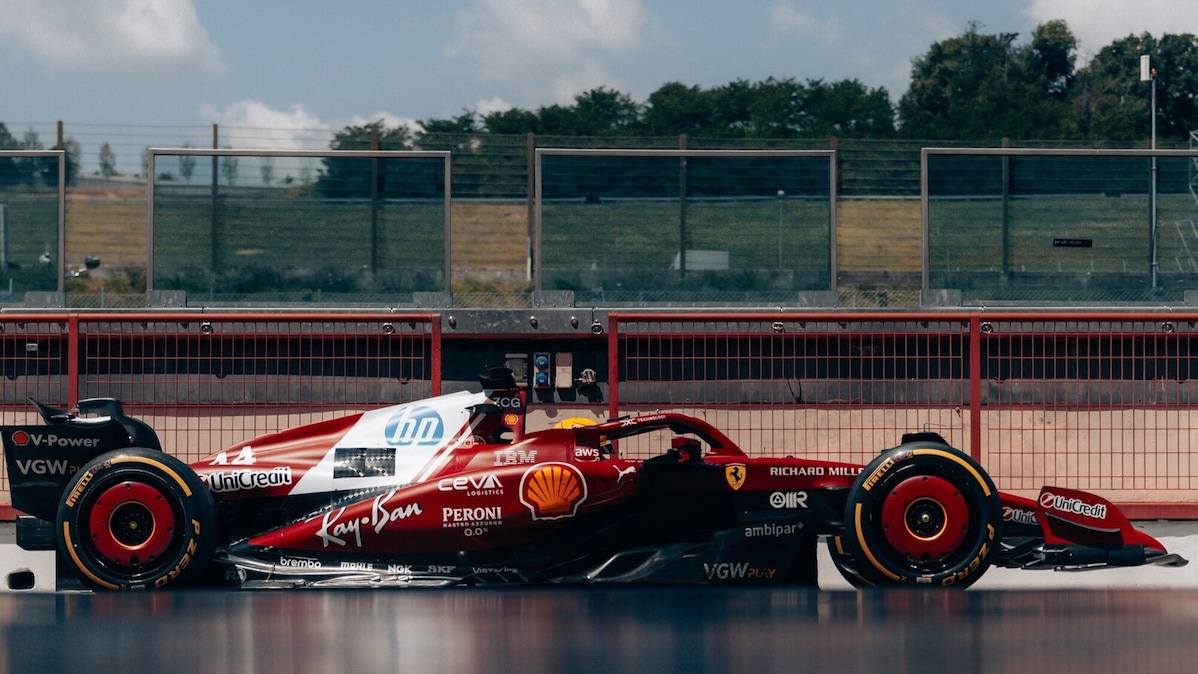
The choice of Mugello for testing was strategic, as the circuit's demanding layout features high-speed corners, elevation changes, and complex aerodynamic challenges that thoroughly stress-test suspension systems. The track's characteristics closely mirror the challenges drivers will face at Spa-Francorchamps, making it an ideal validation venue.
Technical findings and correlations
Initial reports from the Mugello test indicate positive correlation between simulation data and real-world performance. While Charles Leclerc reported no dramatic difference in handling characteristics, telemetry data confirmed that the suspension met Ferrari's internal validation criteria and passed all necessary performance benchmarks.
The test program specifically focused on evaluating the car's ability to run at lower ride heights without excessive plank wear, addressing the fundamental issue that has limited the SF-25's performance throughout 2025. Ferrari's engineers collected crucial data on suspension behavior across different speed ranges and load conditions.
Strategic importance for Ferrari's 2025 campaign
Final major upgrade of the season
The Belgian Grand Prix package represents Ferrari's last significant development push for the SF-25 before the team shifts full attention to their 2026 project. With McLaren currently dominating the championship standings, Ferrari's focus has shifted to securing second place in the Constructors' Championship ahead of Mercedes and Red Bull.
The upgrade timing is particularly critical given that Belgium features a Sprint format, providing only one practice session before qualifying. Ferrari's extensive preparation at Mugello becomes even more valuable under these compressed weekend conditions.
Addressing Hamilton's feedback
The suspension upgrade incorporates specific feedback from Lewis Hamilton, who has struggled to extract maximum performance from the SF-25's difficult handling characteristics. Hamilton's experience with different suspension philosophies from his Mercedes years has provided valuable input for Ferrari's engineers in developing the new system.
The modifications aim to provide the rear-end stability that Hamilton has consistently requested since joining Ferrari, particularly under braking and during corner entry phases.
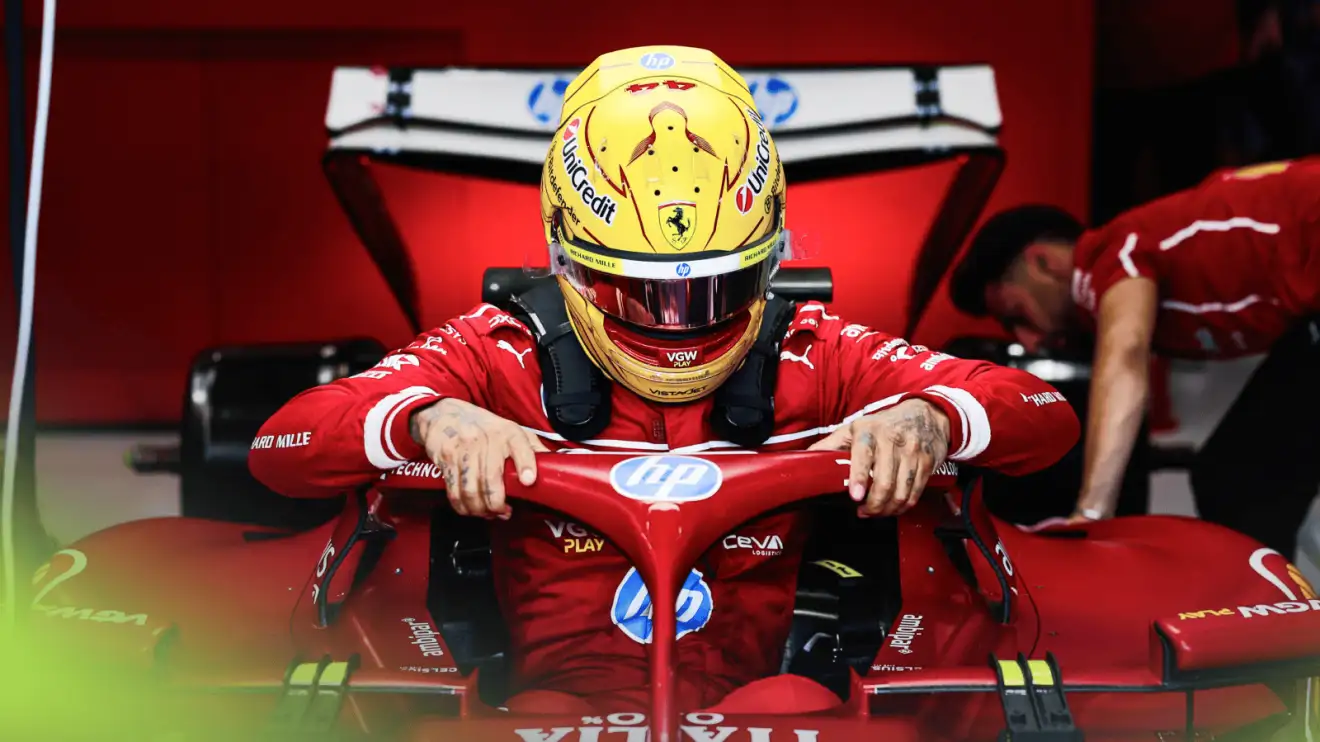
Spa-Francorchamps: the ultimate testing ground
Circuit-specific challenges
The Belgian Grand Prix at Spa-Francorchamps provides the perfect venue to evaluate Ferrari's suspension upgrade. The circuit's legendary Eau Rouge-Raidillon complex will subject the new system to extreme compression forces, while the long straights and varying-speed corners will test the suspension's versatility across different aerodynamic conditions.
Spa's 7.004-kilometer layout combines high-speed sections that demand aerodynamic efficiency with slower technical areas requiring mechanical grip, exactly the operating window Ferrari seeks to expand with their upgrade package.
Weather variables
Belgium's notoriously unpredictable weather could provide additional validation opportunities for Ferrari's new suspension system. The ability to maintain consistent performance across varying track conditions and grip levels will be a crucial test of the upgrade's effectiveness.
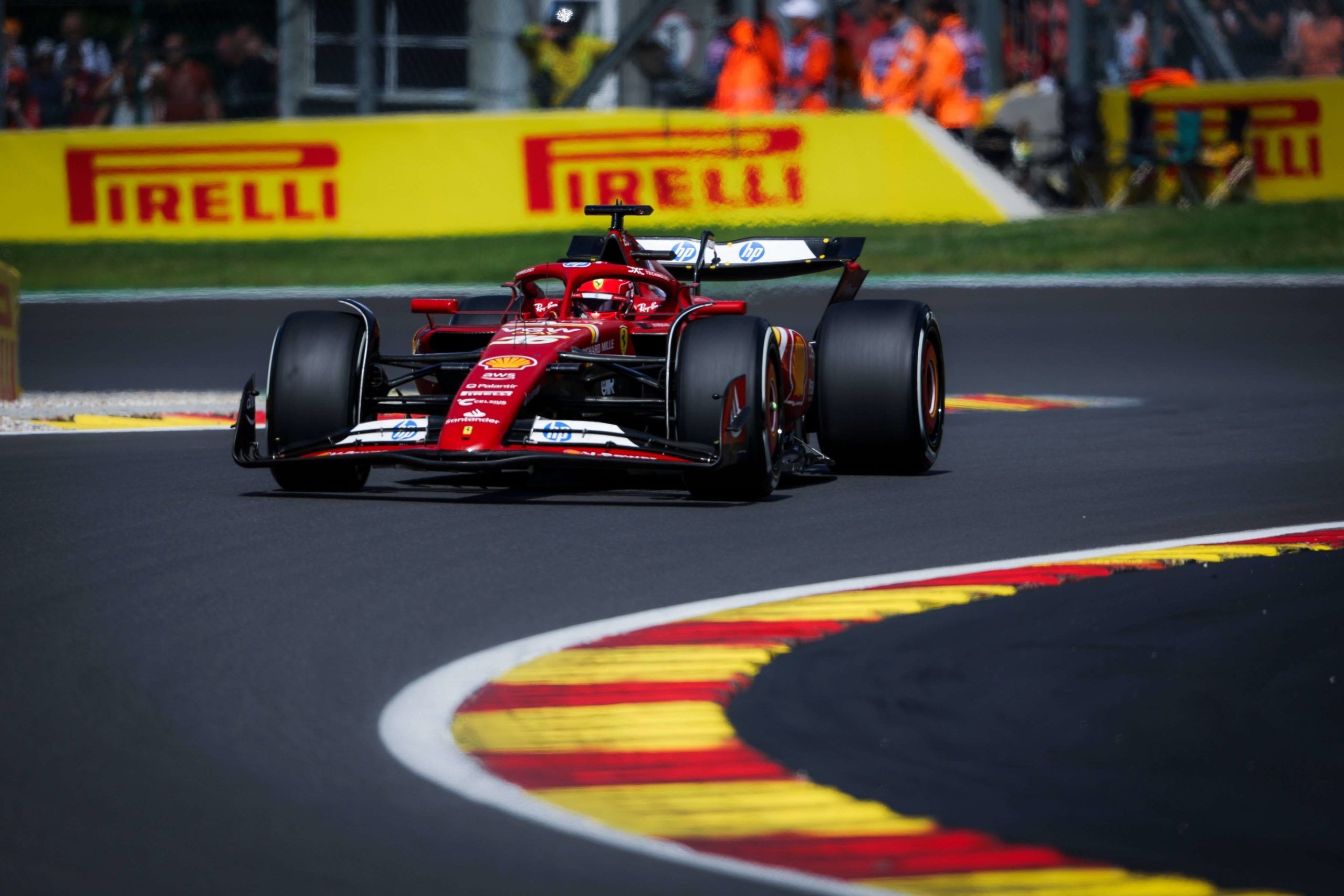
Championship implications and future development
2025 season impact
While Ferrari may not challenge McLaren for race victories, the suspension upgrade could prove decisive in their battle with Mercedes and Red Bull for second place in the Constructors' Championship. The improved consistency and expanded operating window should help Ferrari maximize point-scoring opportunities in the season's remaining rounds.
2026 development foundation
The mechanical nature of the suspension upgrades means many components and lessons learned can carry forward to Ferrari's 2026 project. This continuity provides additional value beyond the immediate 2025 performance benefits, establishing a foundation for the next regulation cycle.
Expert analysis and industry perspective
Technical assessment
Former F1 designer Gary Anderson notes that while Ferrari's changes are not as dramatic as some competitors' suspension modifications, they represent a targeted solution to specific problems rather than wholesale redesign. Anderson emphasizes that the real benefit lies in the suspension's ability to work harmoniously with Ferrari's aerodynamic package.
Competitive context
Ferrari's upgrade timing aligns with the broader development cycle across the Formula 1 grid, with most teams focusing resources on 2026 preparation. This makes Ferrari's continued investment in 2025 development particularly significant, demonstrating their commitment to maximizing current-season performance while building future competitiveness.
Conclusion: a season-defining weekend
The 2025 Belgian Grand Prix represents a crucial inflection point for Ferrari's season. After months of development and testing, their comprehensive upgrade package, led by the revolutionary rear suspension system, promises to address the SF-25's fundamental limitations while providing a platform for improved performance throughout the remainder of 2025.
The success or failure of these upgrades at Spa-Francorchamps will not only determine Ferrari's competitive position for the rest of this season but also validate their technical philosophy for the 2026 regulation reset. With Lewis Hamilton and Charles Leclerc behind the wheel, armed with Ferrari's most significant development package of the year, the Belgian Grand Prix will reveal whether the Italian team can finally unlock the SF-25's true potential and return to regular podium contention.
The combination of advanced suspension technology, refined aerodynamics, and strategic development timing makes this weekend one of the most technically significant of Ferrari's 2025 campaign. As the F1 circus prepares for the legendary challenges of Spa-Francorchamps, all eyes will be on the red cars and whether Ferrari's engineering excellence can translate into the on-track performance their passionate fanbase has been waiting for.
